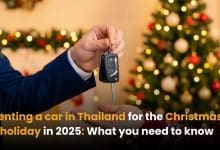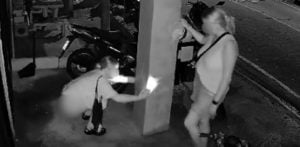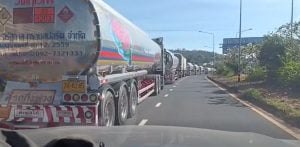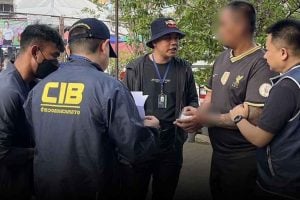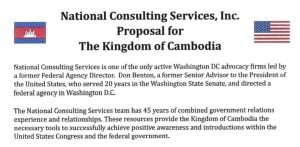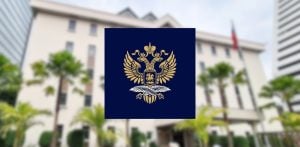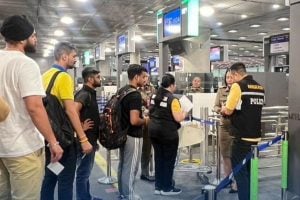How to use Thailand’s toll roads: Easy Pass, M-PASS, M-Flow & More
What to expect when navigating Thailand’s expressway networks and payment setups
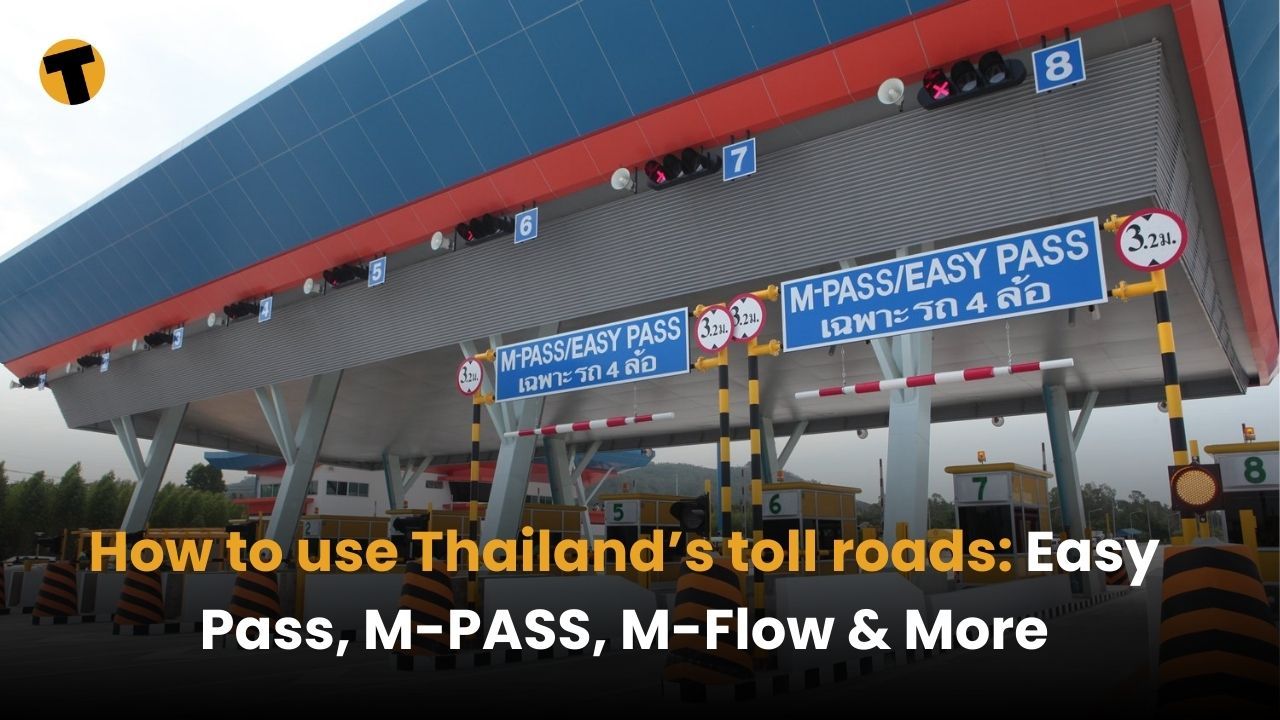
If you’re driving in Thailand, whether as an expat, long-term visitor, or local, you’ll likely encounter tollways. These roads save time, cut through city congestion, and connect provinces. But using them isn’t always intuitive. Here’s a step-by-step guide to navigating Thailand’s expressways, including when to pay, how to get a pass, and tips to avoid fines or delays.
On this page
| Section (Click to jump) | Short Summary |
|---|---|
| Step 1: Know the types of toll roads in Thailand | Thailand has expressways and motorways, each managed by different agencies and using distance-based fees. |
| Step 2: Understand your payment options | Drivers can pay by cash, electronic passes (Easy Pass/M-PASS), or the camera-based M-Flow system. |
| Step 3: Using the toll lanes | Cash, pass-only, and M-Flow lanes are clearly marked; choose correctly to avoid delays or reversing out. |
| Step 4 (Optional): Using M-Flow for smoother travel | M-Flow allows barrier-free travel via plate recognition, with payments deducted automatically or within 7 days. |
| Typical toll road costs in Thailand (standard car) | Fees vary by route, generally ranging from 30 to 150+ baht depending on distance and location. |
| Travel tips | Plan around peak times, holiday waivers, navigation tools, rest stops, and rental car toll tag rules. |
Step 1: Know the types of toll roads in Thailand
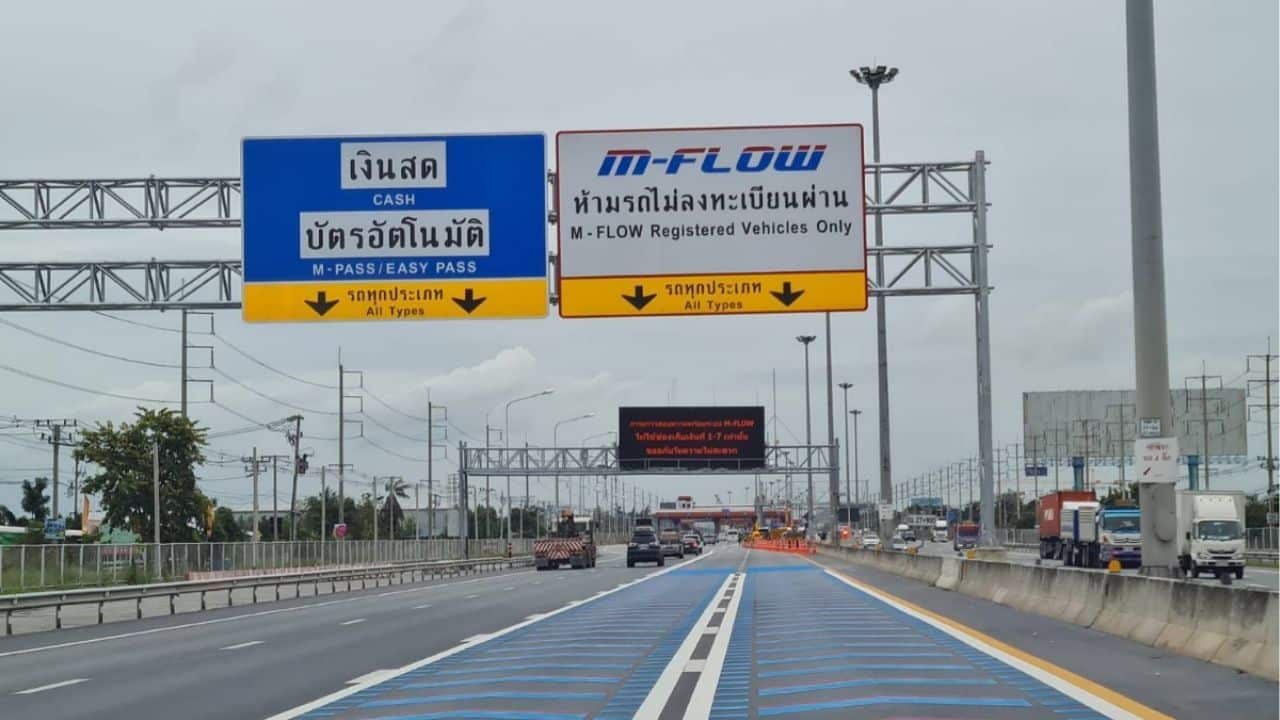
Thailand has two main types of toll roads: urban expressways and intercity motorways. Expressways are typically found in and around Bangkok and are managed by the Expressway Authority of Thailand (EXAT). These include well-known routes like the Chalerm Maha Nakhon and Si Rat Expressways.
Motorways, on the other hand, connect the capital to other provinces and are managed by the Department of Highways. Examples include Motorway 7 (Bangkok to Pattaya) and Motorway 9 (the eastern outer ring road). The Don Mueang Tollway is another key elevated route that serves the city’s northern suburbs and airport.
Toll fees are distance-based. For a standard car, you can expect to pay anywhere from 40 baht to over 200 baht, depending on the trip.
Step 2: Understand your payment options
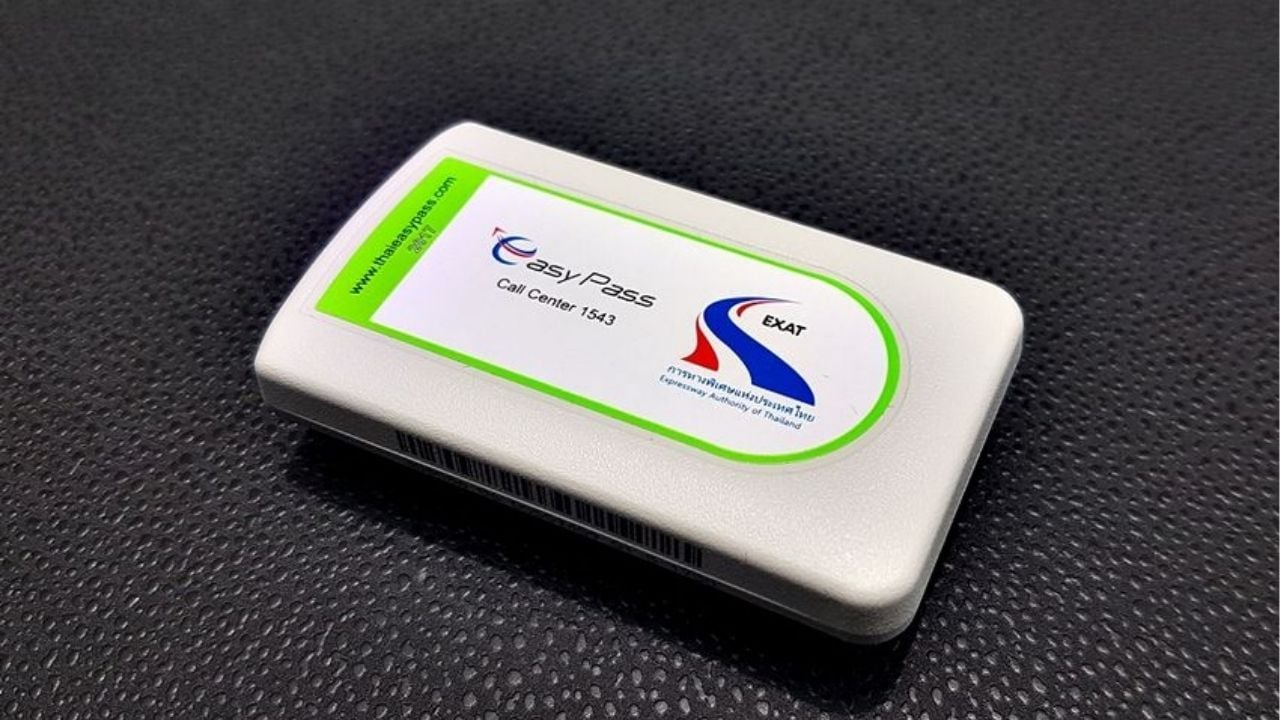
There are three main ways to pay for toll roads in Thailand:
- Cash payment at the booth: This is the most common method and it is expected if you do not have the other two payment methods. You cannot pay by PromptPay, so you should always keep cash ready in your glovebox or cupholder. Keep coins and banknotes that are divisible by 10, such as 10 baht coins and 20, 50, and 100 baht banknotes.
- Electronic toll tags: These include Easy Pass and M-PASS. They are fast, convenient, and as of recently, they are interchangeable too. They are similar in function but belong to different operating bodies (Easy Pass is from the Expressway Authority of Thailand and the M-Pass is from the Department of Highway). Essentially, it will scan a small electronic box you can stick to your dashboard or window and deduct the money you topped up.
- M-Flow (camera-based system): This is Thailand’s newest tolling method. It scans your license plate and bills you later online. As far as it has been found, for expats/foreigners, the best practice will be to connect your credit card to M-Flow so it can be debited from there. Non-members can pass through the M-Flow but need to pay the toll no later than 7 days on this website.
Easy Pass vs. M-PASS: What’s the difference?
| Feature | EASY PASS | M-PASS |
|---|---|---|
| Where to use | All toll expressways and motorways | All toll expressways and motorways |
| Where to get | EXAT toll offices, 7-Eleven stores | Krung Thai Bank, motorway kiosks |
| Needed info | Passport/ID, car registration | Passport/ID, car registration |
| Initial top-up | 300+ Thai baht | 300 to 500 Thai baht |
| Top-up options | Banking apps, 7-Eleven, EXAT | KTB app, ATMs, 7-Eleven |
| Balance check | EXAT app, website, SMS | M-PASS app, website, SMS |
Tip: Use only one tag per vehicle to avoid system errors. These days, toll booths should have both Ea
Step 3: Using the toll road lanes
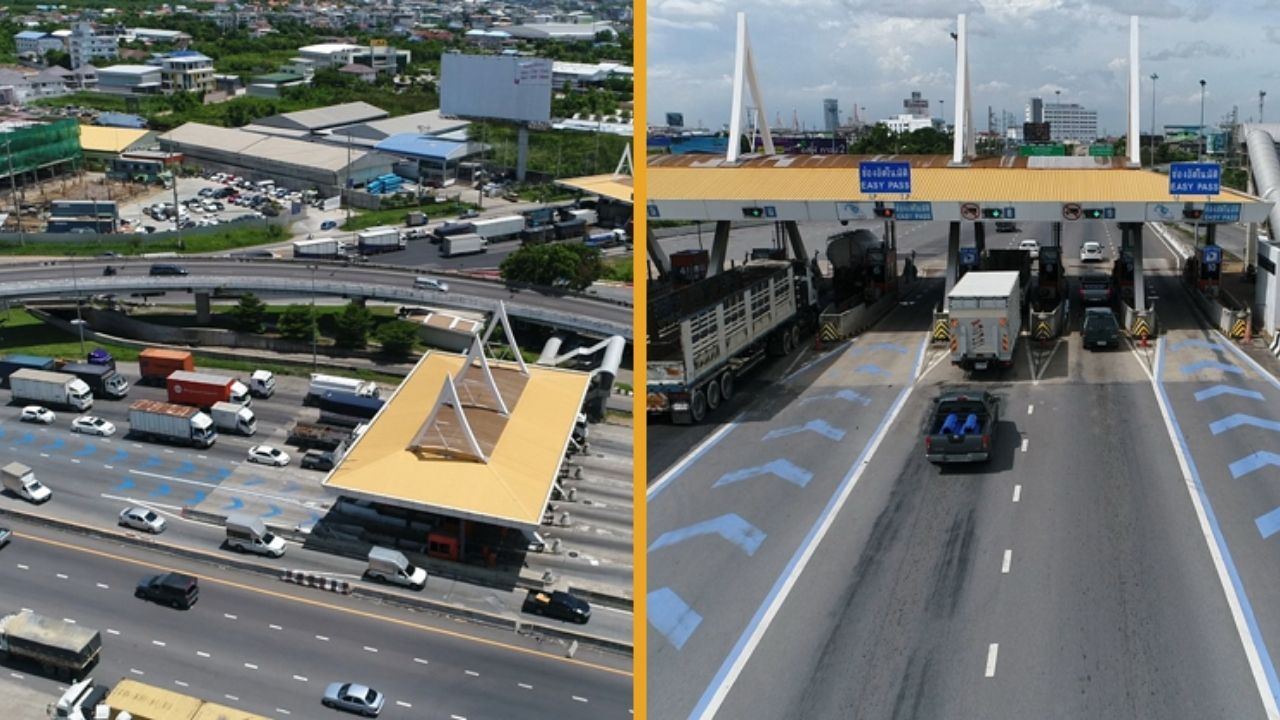
When driving down the highway, you will come across a fork that will give you the option to continue your current direction or lead you into the expressway.
It should not be too hard to miss but sometimes you will need to make an extra effort to go into the toll lanes and sometimes you might need to make an extra effort to avoid them. It usually depends on how the toll you are passing is built.
When going into the expressway, the toll lanes are clearly marked. Cash lanes are usually on the left, while Easy Pass/M-PASS users head to the middle or right lanes marked in blue and M-Flow lanes are typically the far right lanes.
If you accidentally enter the wrong lane (like a pass-only lane without a tag), the barrier won’t lift. Turn on your hazard lights and begin reversing out of the lane slowly. You could try to ask the toll staff for help, too, if you need but most people will give way if you’re trying to make your way out.
Step 4 (Optional): Using M-Flow for smoother travel
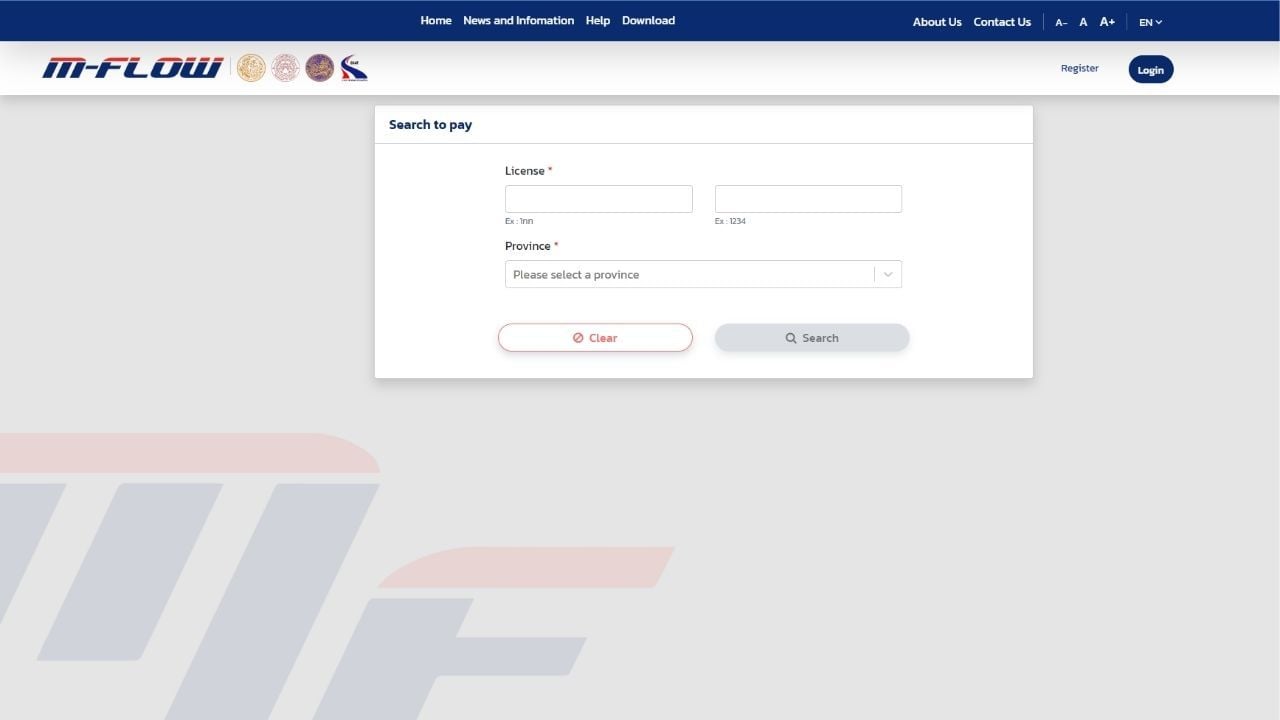
As mentioned before, M-Flow is a high-speed, no-barrier tolling system. It would usually be located on the far right of the toll booths. It can be used by registered members and non-members but still requires that you connect your credit card (for members) or pay post-usage (for non-members).
Two ways to use it:
- Want to upgrade to Easy Pass Plus? Easy Pass and M-Pass will not work with M-Flow; however, you could upgrade to Easy Pass Plus, which should work with M-Flow. To get Easy Pass Plus, you will register for regular Easy Pass but select the Plus option during the process.
- No tag? Register at the M-Flow website or via the M-Flow app. If you do not link it to your credit card and are unregistered, you’ll need to pay within 7 days, or face fines up to 10 times the original toll.
This system is expanding but currently operates mainly on Motorway 9.
Typical toll road costs in Thailand (standard car)
| Route | Estimated Toll (Baht) |
| Bangkok Expressways (short) | 50 to 100 |
| Don Mueang Tollway | 60 to 115 |
| Bangkok to Pattaya (M7) | 105 to 130 |
| Motorway 9 (Outer Ring) | 30 to 70 |
| Burapha Withi Expressway | 150+ |
These fees are consistent for Thais and foreigners. Most motorcycles are not permitted on tollways.
You can see the full list of toll road costs in Thailand from the EXAT website for multiple expressways. Keep in mind that this list was for rates effective from 2018, 2019, and 2021 and might have increased a bit since then, so always have more cash ready.
Travel tips
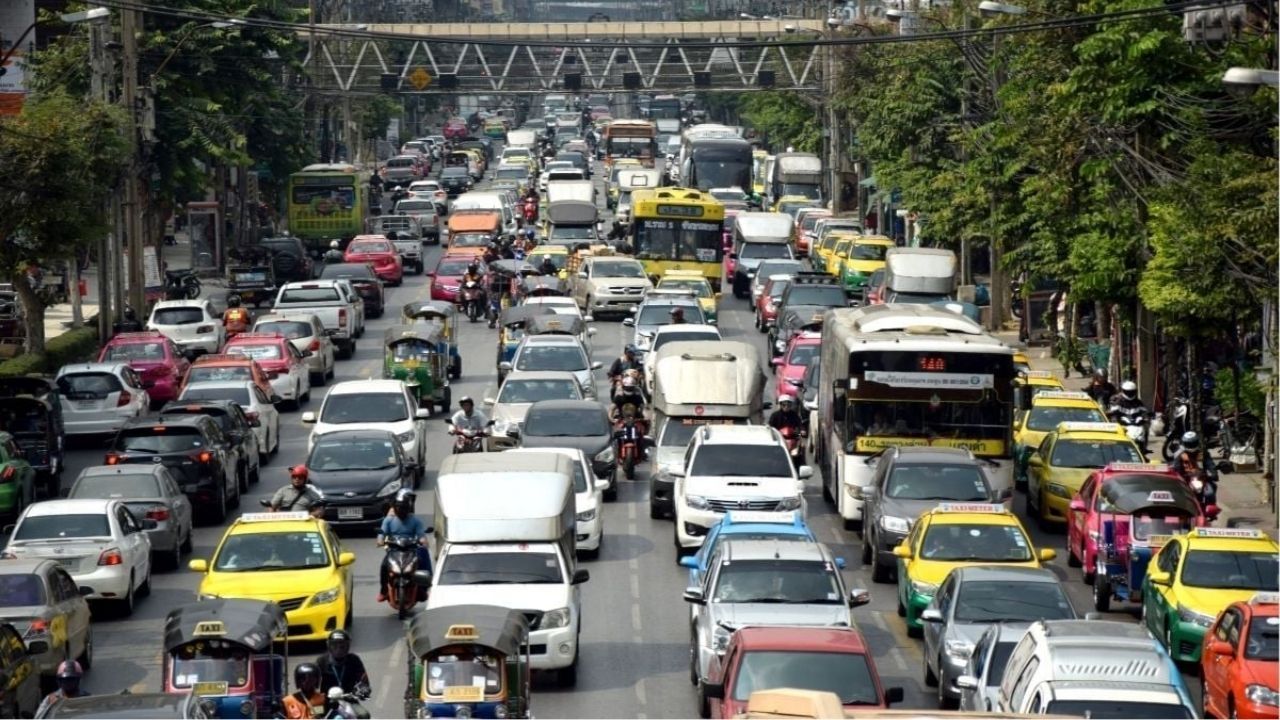
Avoid peak hours: As ironic as it is, since it was designed to avoid traffic, toll lanes can be heavily congested on weekdays and weekends from 7.30am to 9.30am and 4.30pm to 6.30pm.
During major Thai holidays such as Songkran or New Year, some tolls are waived. Check local news for announcements.
Navigation apps like Google Maps and Waze help monitor traffic. The EXAT Traffic app offers live CCTV feeds and traffic reports.
If you’re heading on a long journey, plan for service stops. Motorways like M7 and M9 have rest areas with fuel, food, and bathrooms.
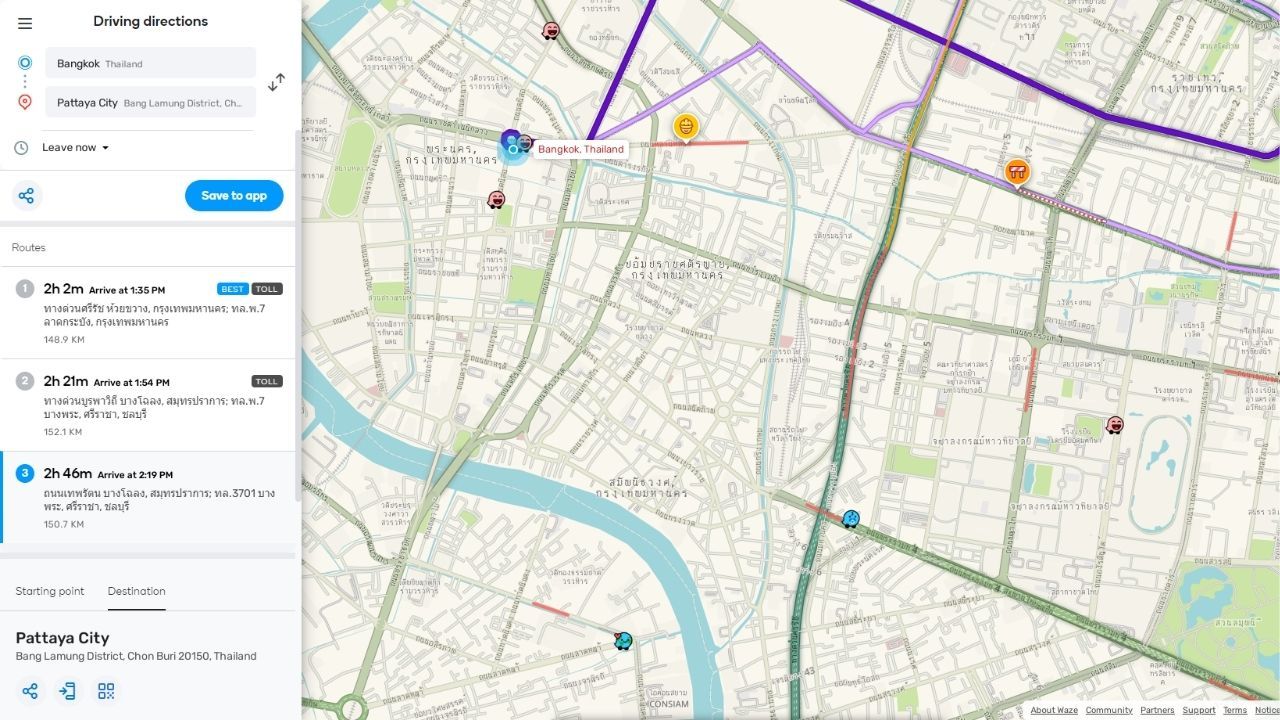
For rental cars, it’s best practice just to go with the cash route of the toll road lanes, since it may not have an Easy Pass/M-Pass or using M-Flow might be problematic for you and the rental car agency.
Thailand is moving toward a more digital tolling future. You can now top up Easy Pass balances through apps like TrueMoney Wallet, and QR code payment options are slowly rolling out. Still, a loaded toll tag or small cash denominations remain your best bet for smooth travel.
Now you’re ready to navigate Thailand’s tollways with confidence. Whether you’re commuting through Bangkok or taking a weekend road trip, understanding how to pay and where to drive makes all the difference.
Related articles:
- How fragile are Thai roads
- How to pay your road tax in Thailand and how much is it?
- A foreigner’s guide to getting a Thai driver’s license in Thailand
The Thaiger key summary
- Thailand’s expressway network uses cash booths, electronic passes, and camera-based systems that operate differently across regions.
- Easy Pass and M-PASS work nationwide, while M-Flow relies on plate recognition and later billing.
- Fees vary by route, and digital payment options continue expanding as Thailand modernises its expressway system
Latest Thailand News
Follow The Thaiger on Google News:
